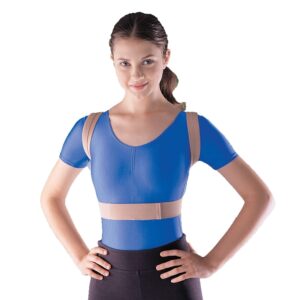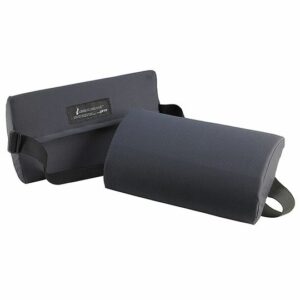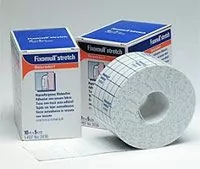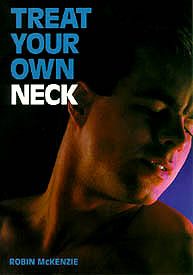Scheuermann’s Disease
Updated:
(Also known as: Calve disease, Scheuermann’s Kyphosis, Scheuermann’s lesion, juvenile osteochondrosis of the spine)
What is Scheuermann’s disease?
Scheuermann’s disease is a condition characterised by abnormal wedge shaped development of the vertebrae of the upper back with subsequent postural abnormality and excessive curvature (i.e. a ‘hunch back’ or ’roundback’) of the thoracic spine (upper back).
The spine comprises of many bones known as vertebrae. Each vertebra connects with the vertebra above and below via two types of joints: the facet joints on either side of the spine and the discs centrally (figure 1).
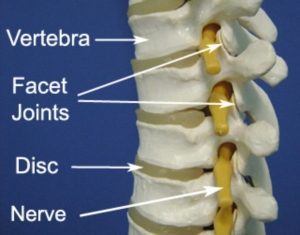
Scheuermann’s disease is an osteochondrosis of the spine. This means it affects bony growth of the vertebrae (of the upper back) and results in abnormal development of the bones of the spine at their growth plates.
In patients with this condition, one side of the vertebrae (the front) grows more slowly than the back of the vertebrae resulting in a prominent wedge shape of the affected bone with the narrow part of the wedge in front. These changes occur during adolescence at a time of rapid growth and result in an increase in the forward bend of your upper back (i.e. an increased thoracic kyphosis). Whilst Scheuermann’s disease primarily affects the vertebrae of the upper back (thoracic spine), it can sometimes also affect the vertebrae of the lower back (lumbar spine).
In addition to wedging of the vertebra, abnormal changes also typically occur at the junction between the vertebra and the disc (i.e. the vertebral end plate). These changes (often seen on X-Ray) are known as Schmorl’s nodes and are characterised by protrusion of some of the disc material into the vertebra.
Scheuermann’s disease is a self-limiting condition that affects boys more often than girls, with most patients being asymptomatic and unaware that they have the condition. The prevalence of the condition is approximately 4 – 8% of the general population.
Cause of Scheuermann’s disease
Whilst the cause of Scheuermann’s disease is not known, the condition does tend to have slightly increased incidence in some families. Some researchers speculate that the condition may be due to pre-existing weakness in vertebral end plates or due to excessive forces being placed on these areas (such as repetitive, prolonged or forceful lifting or bending forwards activities). Other factors which may potentially contribute to the development of the condition include biomechanical factors such as a shortened sternum, increased height (i.e. patients with Scheuermann’s disease tend to be taller than their peers), endocrine disorders and juvenile osteoporosis.
Signs and symptoms of Scheuermann’s disease
Many patients with this condition experience little or no symptoms with their condition only being discovered in later life. These patients typically present with a postural abnormality that is characterised by an increased forward curvature of the upper back (i.e. increased thoracic kyphosis) and some restriction of movement (particularly backward bending of the thoracic spine) without pain. The postural abnormality associated with this condition is not correctable (i.e. the patient cannot fully straighten up). Other patients with this condition may experience acute upper back pain, achiness and / or stiffness particularly during a period of rapid growth. Symptoms are often mild to moderate and generally are exacerbated with increased physical activity (such as repetitive, prolonged or forceful lifting, slouching, bending forwards activities or contact sports). Postural abnormalities such as an excessive curvature of the upper back (thoracic kyphosis), and possibly a secondary compensatory excessive lumbar lordosis (increased arch in the lower back) are typically evident. Sometimes patients may not experience upper back pain where the postural changes are, but instead may experience neck, shoulder or lower back pain that is actually being caused by the postural changes in the thoracic spine.
Diagnosis of Scheuermann’s disease
An X-ray is usually required to confirm the diagnosis of Scheuermann’s disease. If an X-ray demonstrates wedging of 5 degrees or more at three adjacent vertebrae then diagnosis of Scheuermann’s disease is made. Other changes associated with the condition may also be present such as Schmorl’s Nodes.
Treatment for Scheuermann’s disease

Members Only ContentBecome a PhysioAdvisor Member to gain full access to this exclusive content. For more details see Become a Member. Already a member? Login Now
Physiotherapy for Scheuermann’s disease

Members Only ContentBecome a PhysioAdvisor Member to gain full access to this exclusive content. For more details see Become a Member. Already a member? Login Now
Prognosis of Scheuermann’s disease
Scheuermann’s disease is a self-limiting condition with any progression of the condition ceasing once the individual reaches skeletal maturity. Most individuals with this condition will have no further problems with their thoracic vertebrae from this time other than some restriction in movement and postural abnormality (i.e. an increased thoracic kyphosis and compensatory lumbar lordosis) which may be present for life. In patients who experience symptoms due to this condition, most patients (who undergo ideal treatment) may be pain free in as little as several days, although typically this may take 2 – 4 weeks. Care must be taken to slowly return to activity following this period to prevent symptom recurrence. In severe cases or in those patients who do not rest adequately from aggravating activities, symptoms may persist for many months or even years.
Other intervention for Scheuermann’s disease

Members Only ContentBecome a PhysioAdvisor Member to gain full access to this exclusive content. For more details see Become a Member. Already a member? Login Now
Exercises for Scheuermann’s disease
The following exercises are commonly prescribed to patients with this condition. You should discuss the suitability of these exercises with your physiotherapist prior to beginning them. Generally, they should be performed provided they do not cause or increase symptoms.
Your physiotherapist can advise when it is appropriate to begin the ‘Initial Exercises’ and eventually progress to the ‘Intermediate’, ‘Advanced’ and ‘Other’ exercises. As a general rule, addition of exercises or progression to more advanced exercises should take place provided there is no increase in symptoms.
Initial Exercises
Shoulder Blade Squeezes
Begin sitting or standing tall with your back and neck straight. Squeeze your shoulder blades together as far as you can go without pain and provided you feel no more than a mild to moderate stretch (figure 4). Hold for 5 seconds and repeat 10 times provided there is no increase in symptoms. Repeat 5 times daily.
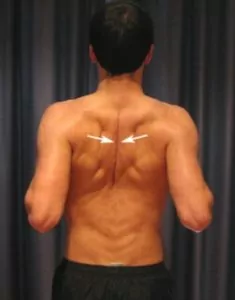
Chin Tucks
Begin sitting or standing tall with your back and neck straight, shoulders should be back slightly. Tuck your chin in until you feel a mild to moderate stretch without pain (figure 5). Keep your eyes and nose facing forwards. Hold for 2 seconds and perform 10 repetitions provided the exercise does not cause or increase symptoms. Repeat 5 times daily.
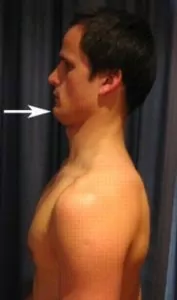
Intermediate Exercises

Members Only ContentBecome a PhysioAdvisor Member to gain full access to this exclusive content. For more details see Become a Member. Already a member? Login Now
Advanced Exercises

Members Only ContentBecome a PhysioAdvisor Member to gain full access to this exclusive content. For more details see Become a Member. Already a member? Login Now
Other Exercises

Members Only ContentBecome a PhysioAdvisor Member to gain full access to this exclusive content. For more details see Become a Member. Already a member? Login Now
Rehabilitation protocol for Scheuermann’s disease

Members Only ContentBecome a PhysioAdvisor Member to gain full access to this exclusive content. For more details see Become a Member. Already a member? Login Now
 Physiotherapy products for Scheuermann’s disease
Physiotherapy products for Scheuermann’s disease
Some of the most commonly recommended products by physiotherapists to hasten healing and speed recovery in patients with this condition include:
To purchase physiotherapy products for Scheuermann’s disease click on one of the above links or visit the PhysioAdvisor Shop.
 Find a Physio for Scheuermann’s disease
Find a Physio for Scheuermann’s disease
Find a physiotherapist in your local area who can treat Scheuermann’s disease.
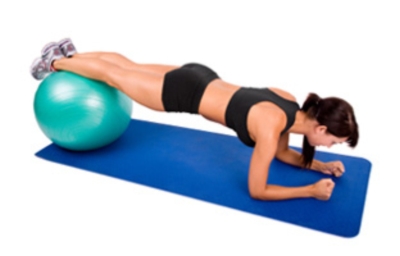 More Exercises
More Exercises
- Upper Back Flexibility Exercises
- Upper Back Strengthening Exercises
- Gym Cable Exercises (Back and Biceps Workout)
- Beginner Pilates Exercises.
- Cardiovascular Exercise.
- Core Stability Exercises.
- Scapular Stability Exercises.
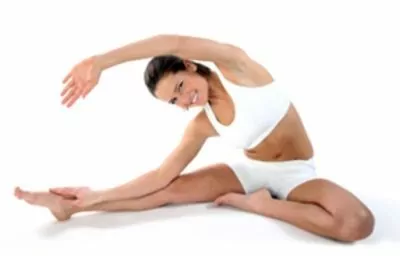 Recommended Reading
Recommended Reading
- Correct Posture.
- Postural Taping.
- Mobile Phone Ergonomics.
- Ergonomic Computer Setup.
- Bike Setup.
- Choosing a School Bag.
- Correct Lifting.
- Ice or Heat.
- Investigations.
- Return to Running.
- Return to Sport
- Upper Back Diagnosis Guide.
Become a PhysioAdvisor Member

Link to this Page
If you would like to link to this article on your website, simply copy the code below and add it to your page:
<a href="https://physioadvisor.com.au/injuries/upper-back-chest/scheuermanns-disease”>Scheuermann’s Disease – PhysioAdvisor.com</a><br/>We offer detailed physiotherapy information on Scheuermann’s disease including symptoms, diagnosis, treatment, exercises and more.
Return to the top of Scheuermann’s Disease.

